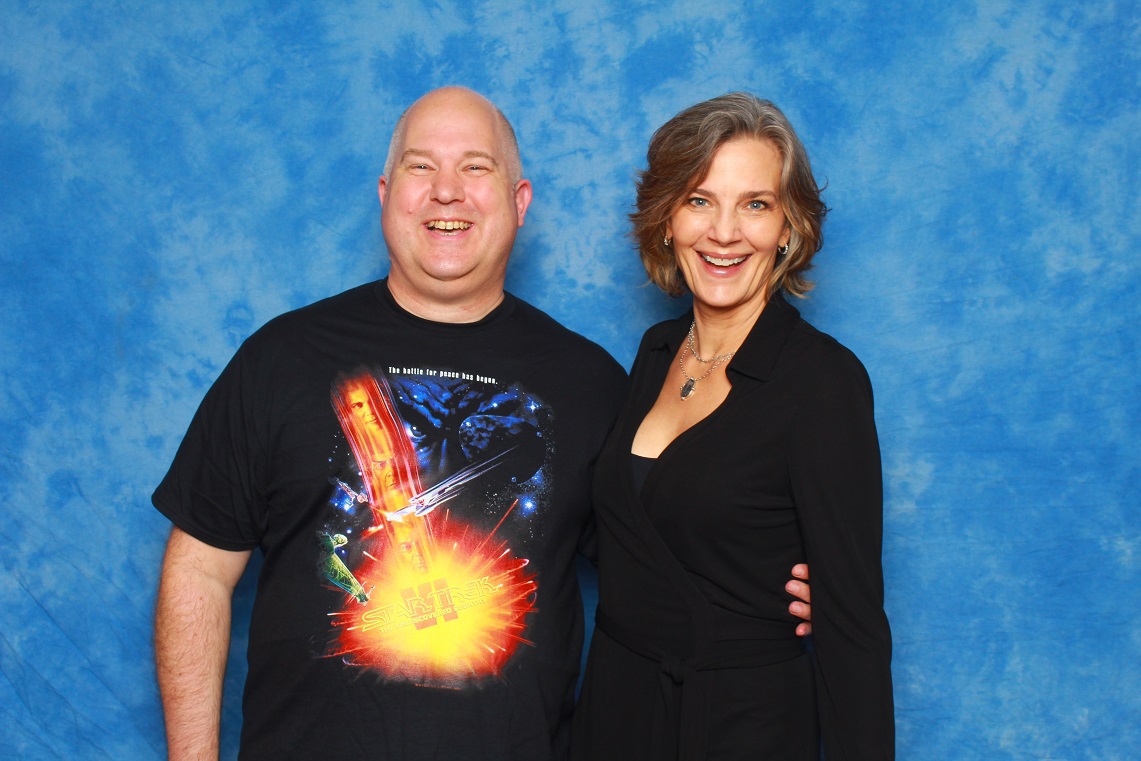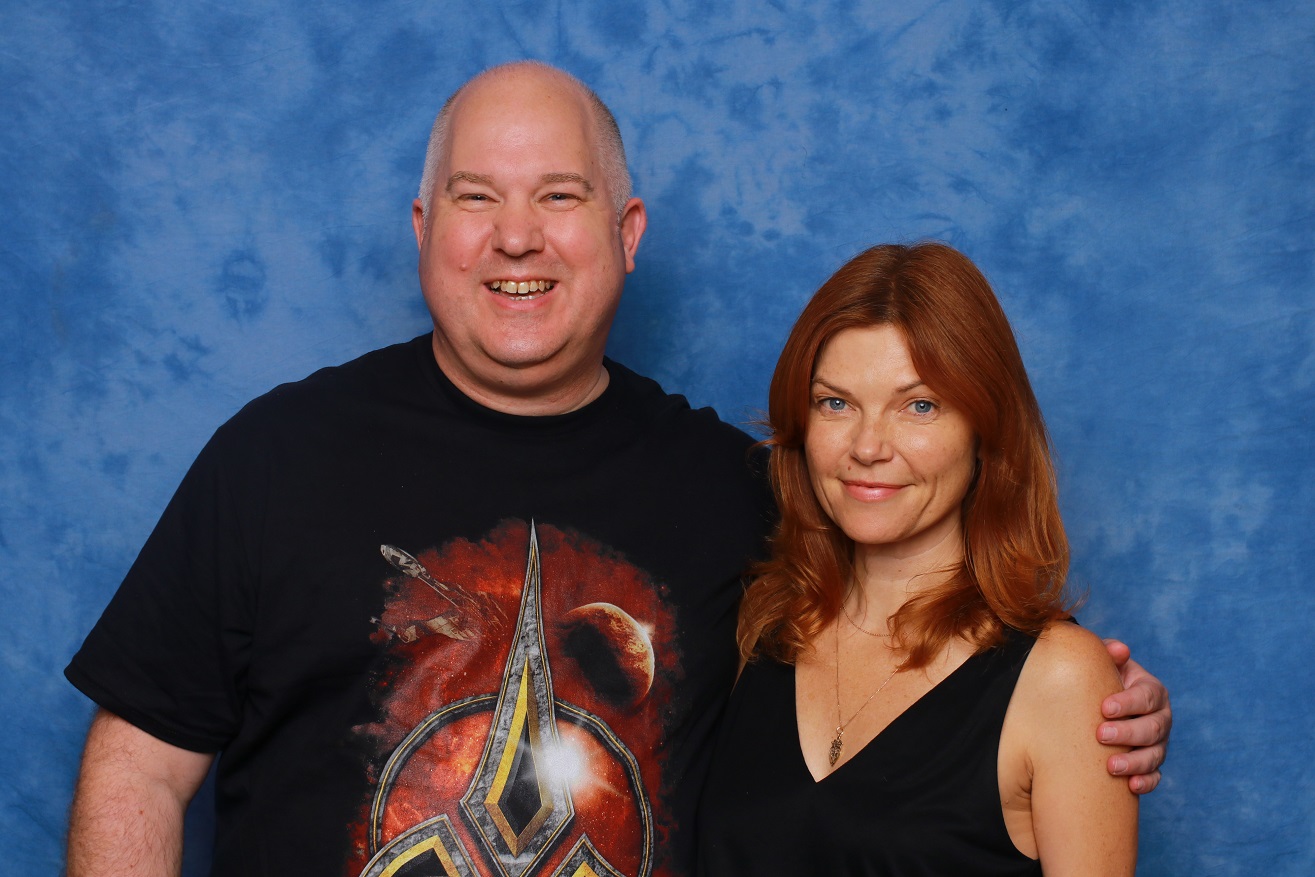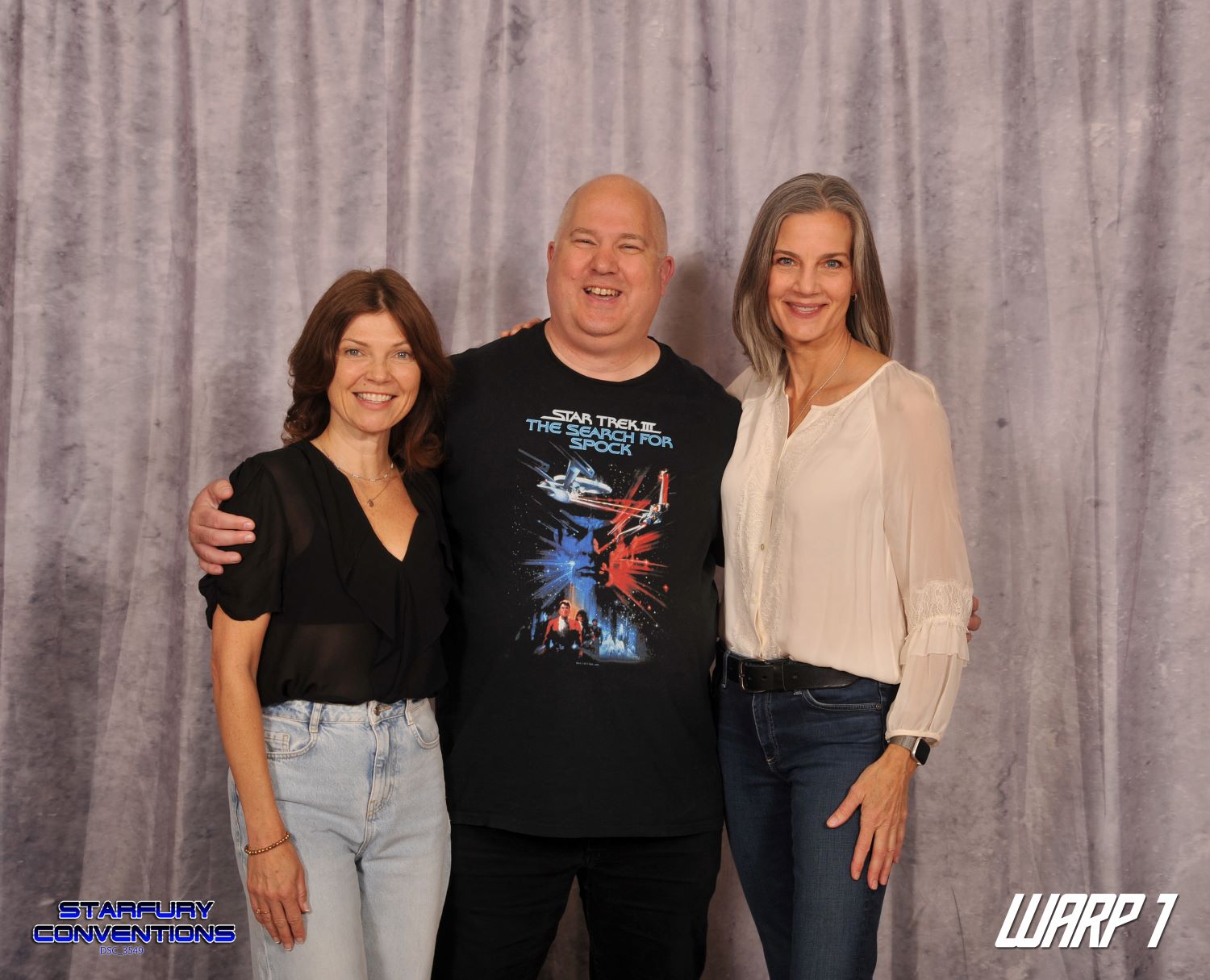
 Trill
Trill
Trills are from Trillius Prime in the Alpha Quadrant and have been trading with Earth since the 22nd Century before becoming members of the Federation. All Trills have spots, their patterns are unique to individuals but show tends between family members.
A minority of Trills have been found to contain a biologically independent lifeform inside an abdominal pouch. The Trill governing body has declined to elaborate further on the presence of the entity, beyond saying it is a tradition for a select few Trills to host these organisms. The relationship between the Trill and this lifeform is unknown; what is known is that the connections between host and parasite are extensive and that there is some form of symbiotic relationship between the two, from the presence of the ‘Symbiosis Commission’ being the overall powerful committee on Trill.
Trillius Prime itself is a warm, humid world with purple oceans. The Hoobishan Baths are renowned across the planet. Mak’ala is the capital city of the planet, where the Symbiosis Commission is headquartered. The Trill only recently signed up as full members of the Federation in 2285 after enjoying close relations for over a century and a half.
Author's note:
I am consciously choosing to ignore TNG: The Host in having the symbiont unknown until the 24th century, simply because any medical, scientific or transporter scan will show the presence of a biologically-separate being within a minority of Trills. Trill culture and the Trill Symbiosis Commission will demand a wall of silence on the reasons for the symbiont being present and, most especially, on what the symbiont does. It is just not feasible, realistically, to hide the presence of a biologically separate entity from the battery of sensors and telepaths on a starship. Any Betazoid will sense the two thought patterns, further reinforcing the problem.
Sources:
Star Trek: TNG The Host
Star Trek: DS9 Equilibrium
Star Trek: DS9 Dax
Star Trek: DS9 Facets
Star Trek: DS9 Rejoined
Star Trek: DS9 Playing God
Star Trek: DS9 Invasive Procedures
Star Trek: DS9 Image in the Sand
Star Trek: DS9 Shadows & Symbols
Star Trek: DS9 Afterimage
Star Trek: DS9 Field of Fire
Star Trek: DSC Forget Me Not
The Last of Us HBO TV series and game.
Plight of the Living Dead: What Real-Life Zombies Reveal About Our World--and Ourselves by Matt Simon (2018).
The Wasp That Brainwashed the Caterpillar by Matt Simon (2016).
Sybil in her own words: The Untold Story of Shirley Mason, Her Multiple Personalities and Paintings by Patrick Suraci Ph.D. (2011)
We Are Jackie: Living with Multiple Personality Disorder by Wilkinson B. Dunlace (2017).
Lillian: A True Story of Multiple Personality Disorder: Based on a memoir by Jean Baker Reynolds by Frank Alabiso Ph.D. (2023).
A Fractured Mind: My Life with Multiple Personality Disorder by Robert B. Oxnam (2013).
The Minds of Billy Milligan by Daniel Keyes (2018).
All Of Me: My incredible true story of how I learned to live with the many personalities sharing my body by Kim Noble and Jeff Hudson (2011).
Deep Knowing: Entering the Realm of Non-Ordinary Intelligence by Kim Hermanson (2022).
The Emperor's New Mind: Concerning Computers, Minds, and the Laws of Physics (Oxford Landmark Science) by Roger Penrose (2016).
Shadows Of The Mind: A Search for the Missing Science of Consciousness by Roger Penrose (1995)
None of the Above: Reflections on Life Beyond the Binary by Travis Alabanza (2022).
Trans: When Ideology Meets Reality by Helen Joyce (2021).
Gender Euphoria: Stories of joy from trans, non-binary and intersex writers by Laura Kate Dale (2021).
The New Girl: A Trans Girl Tells It Like It Is by Rhyannon Styles (2017).
Transitional: In One Way or Another, We All Transition by Munroe Bergdorf (2023).
The End of Gender: Debunking the Myths about Sex and Identity in Our Society by Debra Soh (2020).
The Gender Games: The Problem With Men and Women, From Someone Who Has Been Both by Juno Dawson (2017).
Beyond the Gender Binary (Pocket Change Collective) by Alok Vaid-Menon (2020).
The Gendered Brain: The new neuroscience that shatters the myth of the female brain by Gina Rippon (2019).
Delusions of Gender: The Real Science Behind Sex Differences by Cordelia Fine (2005).
Testosterone Rex: Unmaking the Myths of Our Gendered Minds by Cordelia Fine (2017).
Inventing Ourselves: The Secret Life of the Teenage Brain by Sarah-Jayne Blakemore (2018).

Trills: Host and Symbiont
With regards the primary feature of Trill society and the biology of a joined Trill: that of attaining the goal of being eligible and chosen to host one of the few Trill symbiots. Symbiotic worms are found in the Caves of Mak'ala and can live for hundreds of years, being implanted in multiple hosts over the centuries. Once joined, the symbiotic worm is the dominant of the two, or more, minds. Like the wasp larvae on Earth that control the minds of the caterpillar they're injected into, the symbiot contros the host body; the host is the vessel that transports the symbiot and experiences the World, whilst the worm provides knowledge and memories of previous hosts, along with facets of their personalities. After ninety-six hours joined, the host and symbiot are joined irreversibly. Once seperated, the worm must be implanted into a new, suitable host, whilst the old host body will then die.
For the host, being implanted with a symbiotic worm is the cumulation of their life's efforts to that point. For their entire life to that point, it has been dedicated to education and excelling in order to gain acceptence to the Symbiosis Commission Selection Programme. Each year there are 1000 potential candidates for implantation and only 300 of them will be successful; competition is tough. The programme includes psychological screening, as well as extensive preparation for the mental rigours of having multiple personalities implanted into their minds, from the previous hosts of the symbiot. For a joined Trill, there will be a minimum of two voices in their head: the symbiot and the host. With older hosts, this can increase to six, seven or more voices. The voices are like a choir in the mind of the host; the symbiot is the dominant voice and the conductor of this choir. The experience is similar to that of people with Dissassociative Identity Disorder, with different personalities coming to the surface at different times or situations. With the previous hosts being of different genders and sexualities, this can also flavour the new, combined personality of the joined Trill. In ways, this is similar to the experience of transition in humans.
The host is there to provide new experiences for the symbiot; taboo prevents reassociation with former spouses or lovers. This taboo is in place to prevent an aristocratic class forming of joined Trills keeping their symbiots togather and ruling over the unjoined Trills. The host has feelings of hunger, thirst, fatigue, lust, whilst the symbiot is above such temptations, beyond a need to reproduce. The personality of a joined Trill can be perceived by a certain aloof attitude, the host having behaviours, but the worm being more removed from the emotional experience. As the symbiot gains more and more personalities, their overall personality changes as each one is added (Author's note: rather like Gallifreyan Time Lords in Dr Who). Isoboramine is the neurotransmitter that connects the Trill host to the symbiot. A joined Trill has two cerebral nuceii and two distinctive brain patterns - something Starfleet medical sensors can detect. As a symbiotic worm ages, its ability to remember previous lifetimes degrades, as does its ability to seperate one lifetime from another. In later symbiotic life this can lead to memories being confused, similar to dementia.
Ambassador Curzon Dax
Curzon Dax has rapidly established himself as one of the foremost diplomats of the Federation. Utilising the previous relations Trill enjoyed with their independence, Dax has been able to build as rapport with the Klingon Empire, demonstrating a true understanding of their culture. He has a reputation as a womaniser, but his skills as a mediator and diplomat far exceed and compensate for this short-coming. He initiated the good relations with the Klingons at the Korvat Colony in 2289 and Dax represented the Federation at the Khitomer Conference in 2293.
Since that time, Ambassador Dax has assisted Spock in building upon the foundations of peace with the Klingons. Dax has met with the Klingons on both the Enterprise-B and the Excelsior, as well as at the second Khitomer Accords and meetings at Kronos.







 Trill
Trill




